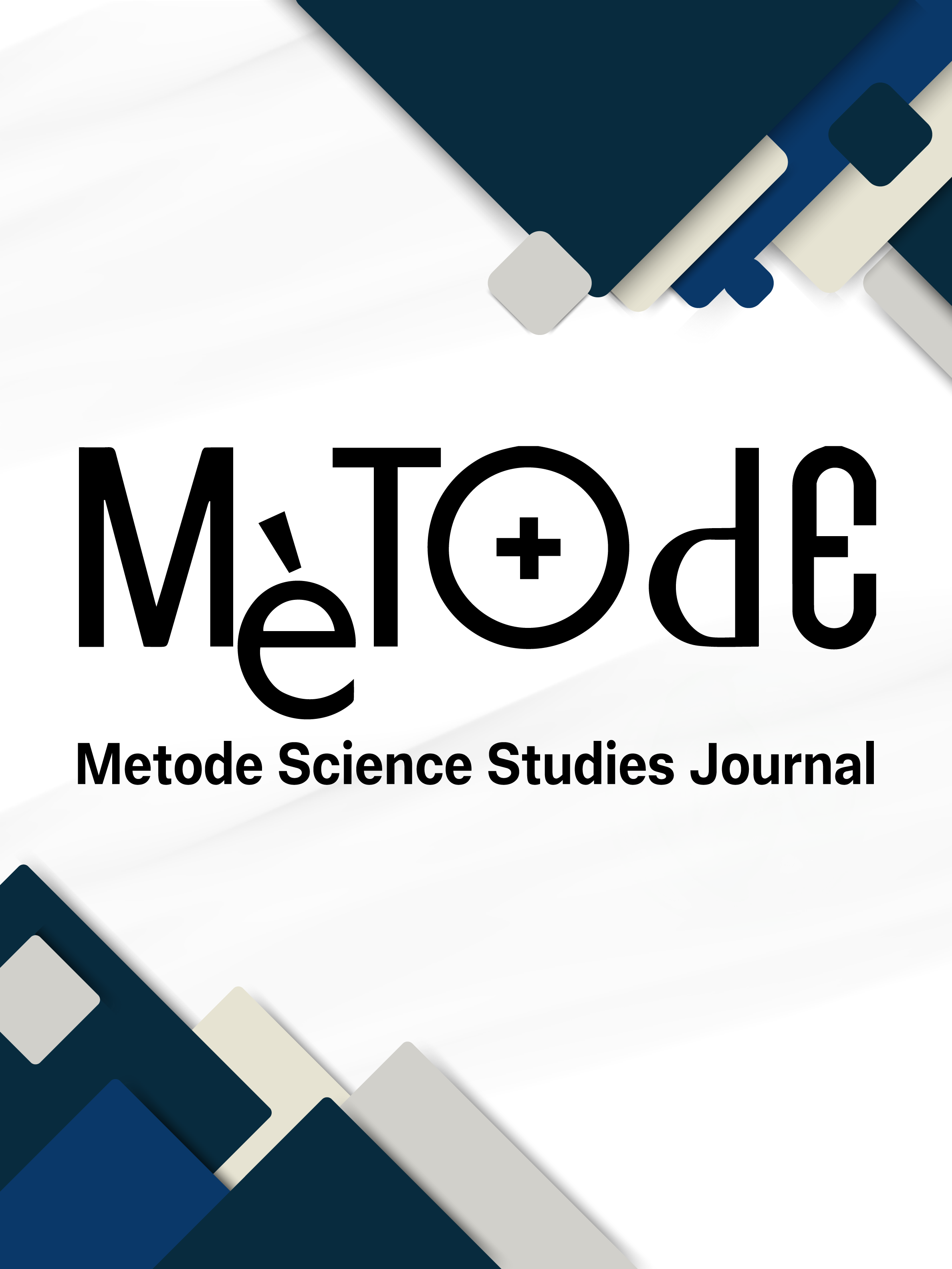Circular chemistry
Adapting linear chemistry to mitigate the climate crisis
DOI:
https://doi.org/10.7203/metode.15.27370Keywords:
circular chemistry, sustainability, environmental crises, planetary boundaries, circular economy Abstract
Abstract
In this article we explore the imperative shift from a linear economic model to a circular one, with a particular focus on the pivotal role of chemistry in this transition. It elucidates the critical global challenges stemming from unsustainable resource extraction and the linear «take-make-dispose» approach, including climate change, resource depletion, and biodiversity loss. Circular chemistry emerges as a promising solution, guided by principles of green chemistry and circular economy. It advocates for perpetual material cycles, emphasizing sustainable end-of-life strategies and product design that prioritizes reuse and recycling. We underscore the need for chemistry to prioritize efficiency, safety, and circularity, while also addressing challenges associated with complex waste streams and the responsible mineralization of chemicals. Achieving circular chemistry necessitates cooperation among individuals, educational and scientific institutions, industries, and regulatory bodies, and as such it can significantly contribute to mitigating global environmental crises by establishing sustainable material circulation as a cornerstone principle.
 Downloads
Downloads
 References
References
Bachmann, M., Zibunas, C., Hartmann, J., Tulus, V., Suh, S., Guillén-Gosálbez, G., & Bardow, A. (2023). Towards circular plastics within planetary boundaries. Nature Sustainability, 6(5), 599–610. https://doi.org/10.1038/s41893-022-01054-9
Earth Overshoot Day. (2023, 5 June). This year’s Earth Overshoot Day lands on August 2: The trend is flattening but still far from reversing [Press release]. https://www.overshootday.org/newsroom/press-release-june-2023-english/
Ellen MacArthur Foundation. (2019). Completing the picture: How the circular economy tackles climate change.
Flerlage, H., & Slootweg, J. C. (2023). Modern chemistry is rubbish. Nature Reviews Chemistry, 7, 593–594. https://doi.org/10.1038/s41570-023-00523-9
Galán-Martín, Á., Tulus, V., Díaz, I., Pozo, C., Pérez-Ramírez, J., & Guillén-Gosálbez, G. (2021). Sustainability footprints of a renewable carbon transition for the petrochemical sector within planetary boundaries. One Earth, 4(4), 565–583. https://doi.org/10.1016/j.oneear.2021.04.001
Keijer, T., Bakker, V., & Slootweg, J. C. (2019). Circular chemistry to enable a circular economy. Nature Chemistry, 11(3), 190−195. https://doi.org/10.1038/s41557-019-0226-9
Kümmerer, K., Clark, J. H., & Zuin, V. G. (2020). Rethinking chemistry for a circular economy. Science, 367(6476), 369–370. https://doi.org/10.1126/science.aba4979
Liu, Z., He, X., Fang, C., Camacho-Forero, L. E., Zhao, Y., Fu, Y., Feng, J., Kostecki, R., Balbuena, P. B., Zhang, J., Lei, J., & Liu, G. (2020). Reversible crosslinked polymer binder for recyclable lithium sulfur batteries with high performance. Advanced Functional Materials, 30(36), 2003605. https://doi.org/10.1002/adfm.202003605
Mahaffy, P. G., Matlin, S. A., Holme, T. A., & MacKellar, J. (2019). Systems thinking for education about the molecular basis of sustainability. Nature Sustainability, 2(5), 362–370. https://doi.org/10.1038/s41893-019-0285-3
Anastas, P. T., & Warner, J. C. (1998). Green chemistry: theory and practice. Oxford University Press.
Persson, L., Carney Almroth, B. M., Collins, C. D., Cornell, S., de Wit, C. A., Diamond, M. L., Fantke, P., Hassellöv, M., MacLeod, M., Ryberg, M. W., Søgaard Jørgensen, P., Villarrubia-Gómez, P., Wang, Z., & Hauschild, M. Z. (2022). Outside the safe operating space of the planetary boundary for novel entities. Environmental Science & Technology, 56(3), 1510–1521. https://doi.org/10.1021/acs.est.1c04158
Richardson, K., Steffen, W., Lucht, W., Bendtsen, J., Cornell, S., Donges, J. F., Drüke, M., Fetzer, I., Bala, G., Von Bloh, W., Feulner, G., Fiedler, S., Gerten, D., Gleeson, T., Hofmann, M., Huiskamp, W., Kummu, M., Mohan, C., Bravo, D., ... Rockström, J. (2023). Earth beyond six of nine planetary boundaries. Science Advances, 9(37). https://doi.org/10.1126/sciadv.adh2458
Rockström, J., Gupta, J., Qin, D., Lade, S. J., Abrams, J. F., Andersen, L. S., Armstrong McKay, D. I., Bai, X., Bala, G., Bunn, S. E., Ciobanu, D., DeClerck, F., Ebi, K., Gifford, L., Gordon, C., Hasan, S., Kanie, N., Lenton, T. M., Loriani, S., … Zhang, X. (2023). Safe and just Earth system boundaries. Nature, 619, 102–111. https://doi.org/10.1038/s41586-023-06083-8
Rockström, J., Steffen, W., Noone, K., Persson, Å., Chapin, F. S., Lambin, E., Lenton, T. M., Scheffer, M., Folke, C., Schellnhuber, H. J., Nykvist, B., de Wit, C. A., Hughes, T., van der Leeuw, S., Rodhe, H., Sörlin, S., Snyder, P. K., Costanza, R., Svedin, U., … Foley, J. (2009). Planetary Boundaries: Exploring the safe operating space for humanity. Ecology and Society, 14(2). https://www.jstor.org/stable/26268316
Steffen, W., Richardson, K., Rockström, J., Cornell, S. E., Fetzer, I., Bennett, E. M., Biggs, R., Carpenter, S. R., de Vries, W., de Wit, C. A., Folke, C., Gerten, D., Heinke, J., Mace, G. M., Persson, L. M., Ramanathan, V., Reyers, B., & Sörlin, S. (2015). Planetary boundaries: Guiding human development on a changing planet. Science, 347(6223), 1259855. https://doi.org/10.1126/science.1259855
The Ellen MacArthur Foundation. (2019). Completing the picture: How the circular economy tackles climate change. https://circulareconomy.europa.eu/platform/sites/default/files/emf_completing_the_picture.pdf
Downloads
Published
How to Cite
-
Abstract235
-
PDF14
Issue
Section
License
Copyright (c) 2024 CC BY-NC-ND 4.0

This work is licensed under a Creative Commons Attribution-NonCommercial-NoDerivatives 4.0 International License.
![]()
All the documents in the OJS platform are open access and property of their respective authors.
Authors publishing in the journal agree to the following terms:
- Authors keep the rights and guarantee Metode Science Studies Journal the right to be the first publication of the document, licensed under a Creative Commons Attribution-NonCommercial-NoDerivatives 4.0 International License that allows others to share the work with an acknowledgement of authorship and publication in the journal.
- Authors are allowed and encouraged to spread their work through electronic means using personal or institutional websites (institutional open archives, personal websites or professional and academic networks profiles) once the text has been published.





